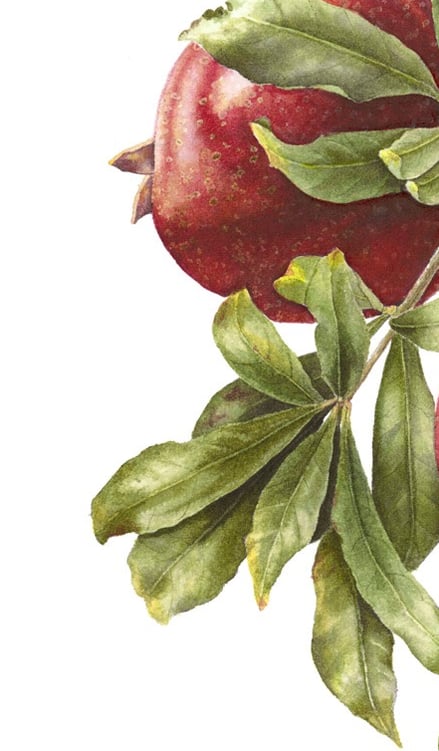Heidi's tips for botanical painting
1. It’s easier to paint things you love.
2.Take all the time necessary in the drawing and composition phase (for Heidi, this represents around a third of the hours spent on a piece).
3. Practice any difficult bits on off-cuts of watercolour paper.
4. Get to the bottom of how particular overlaps of leaves, flowers and other elements work before painting starts.
5. If the piece is complex, first shade in a complete, rough version on a separate page using graphite or grey wash to show shadows or tonal values. This gives great confidence in proceeding.
6. There are many ways to arrive at a good pigment choice, and none are wrong if they reflect nature's colours.
7. If a particular section is not working, let it dry, leave it and move on. It will become clearer later how to fix it, once you have the perspective of more completed. And once your panic has subsided...
8. Preserve the light. It's too easy to enjoy applying the beautiful hues and not notice your highlights disappearing, never to be reclaimed.
9. Indulge yourself in deep, intense tones or shadows where they actually fall (best applied first) in cross-overs or on the undersides of foliage and flowers. Your work will leap from the page.
10. Watercolour is capable of great intensity and drama, as well as subtle delicacy. Make the most of its full register for dramatic effect.
And finally... don’t forget to breathe......and to enjoy your painting!



